After the jubilation of Armistice Day and the haggling over the peace treaty, domestic contention seems to have gained more prominence during the summer of 1919. Although New York City celebrated the return of several military units from Europe, there were many headlines in The New York Times about race riots and work stoppages. In September, while President Woodrow Wilson was barnstorming the nation trying to drum up support for the peace treaty and the League of Nations, General John Pershing, commander-in-chief of the American Expeditionary Force, returned to America after almost two and a half years in Europe. The parade in Manhattan featured at least one horse-stopping moment when the general dismounted to kiss a pretty young woman bearing roses. During ceremonies at Central Park General Pershing kissed the Stars and Stripes. On the way to Washington, D.C. he stopped in Philadelphia and saluted the Liberty Bell. In the nation’s capital he addressed Congress and led the First Division down Pennsylvania Avenue in “the last great American parade of the World War.”
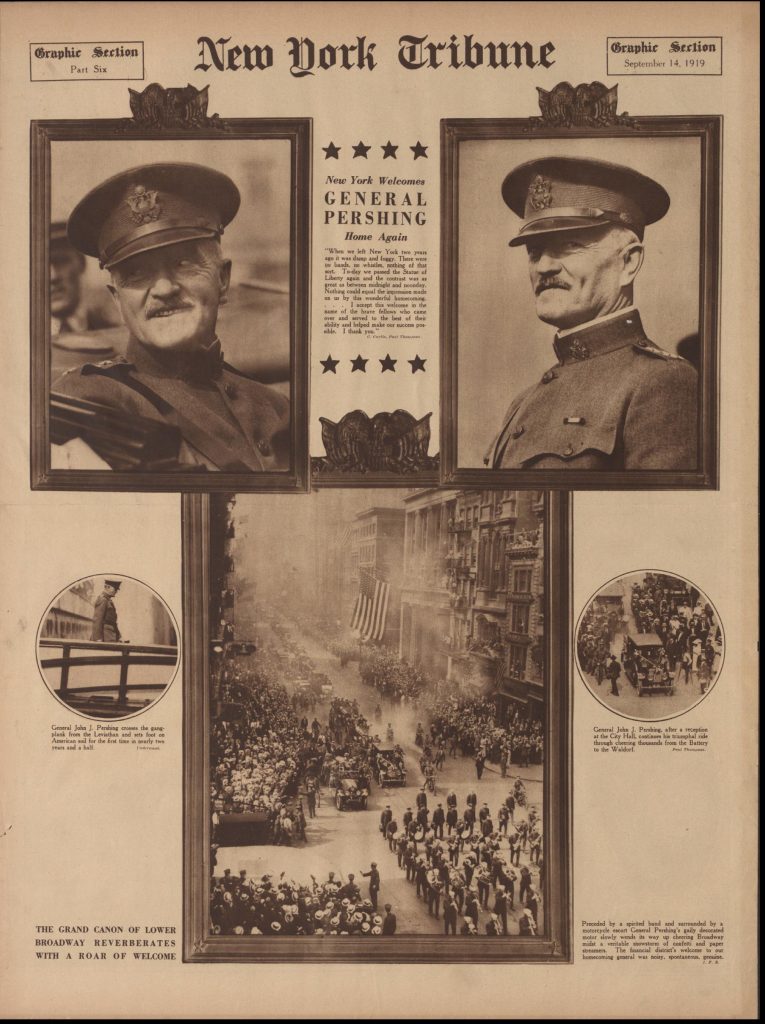
home of the brave fellows
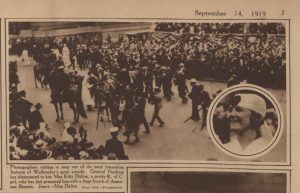
flower power
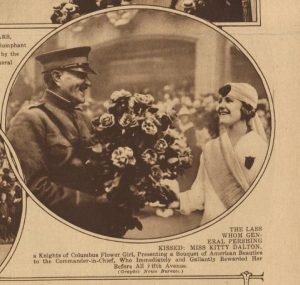
American Beauties
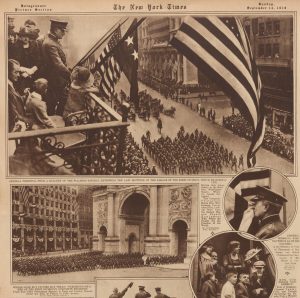
flag kissin’
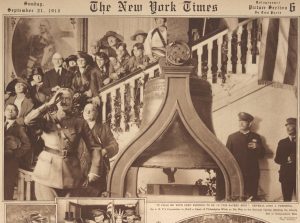
sacred salute
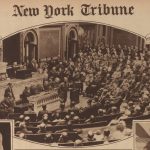
at the joint session
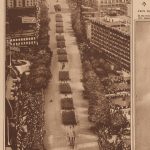
Penn Ave from airplane
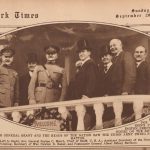
further review with Asst. Sec. FD Roosevelt
___________________
Before he left France General Pershing paid his respects at Quentin Roosevelt’s grave
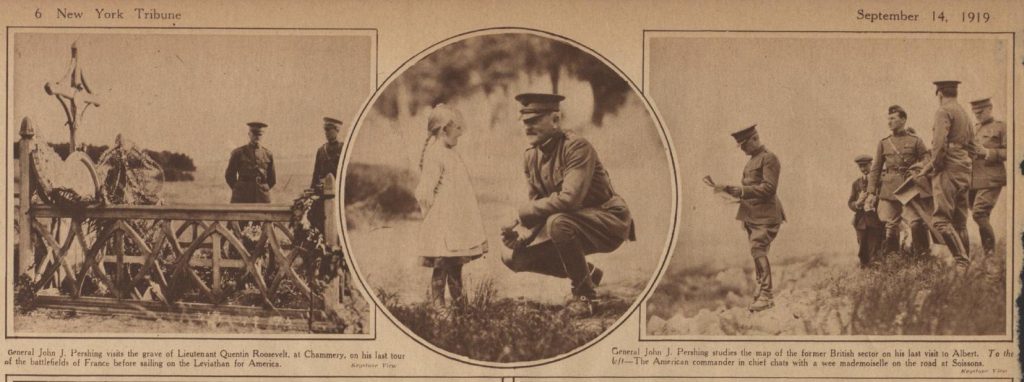
closing scenes over there
While General Pershing was deployed at Fort Bliss, his wife and three daughters died in a fire at the Presidio in San Francisco in August 1915. Only his son Francis Warren survived. “Colonel Francis Warren Pershing (1909–1980), John J. Pershing’s son, served in the Second World War as an advisor to the Army Chief of Staff, General George C. Marshall.”
I had heard that Grantland Rice was a famous sportswriter; I didn’t know that he seems to have dabbled a bit in political satire. The Trib seems to have started using his work in its picture paper in late summer 1919. The “primate of Belgium”, Désiré-Joseph Mercier, had to have his picture in the papers almost as much as General Pershing at about the same time. He “is noted for his staunch resistance to the German occupation of 1914–1918 during the Great War” and also visited the Liberty Bell during his tour of the States. Reportedly many soldiers found Kitty Dalton attractive. The Leviathan was originally the German Vaterland. The United States seized her after it entered World War I. The ship transported over 119,000 troops to Europe before the Armistice and after that obviously returned a lot of “Sammies” back over here.
Somehow I doubt Nike is planning a 48-star U.S. flag retrospective any time soon.
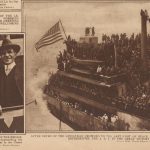
The general’s ride back to the States
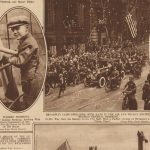
with “His Father’s Commission as General”
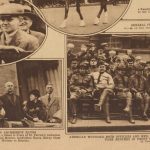
the wounded watched
All the newspaper clippings come from the Library of Congress: New York Tribune: September 14, 1919, September 28, 1919; The New York Times: September 14, 1919, September 21, 1919, September 28, 1919. Also at the Library – the flag sheet music cover. The portrait of the general as a young boy was published in 1919’s The Story of General Pershing by Everett T. Tomlinson the book’s available at Project Gutenberg. I added the information about Cardinal Mercier on September 23, 2019.
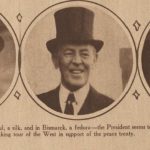
hat trick
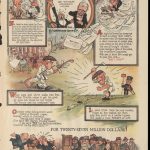
presidential frustrations
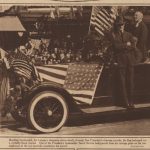
the street of San Francisco
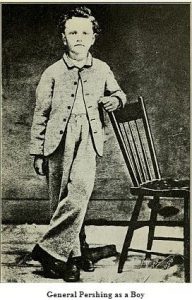
and kissin’ pretty girls isn’t bad either
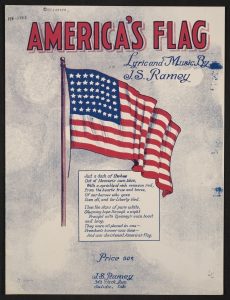
beloved banner

















